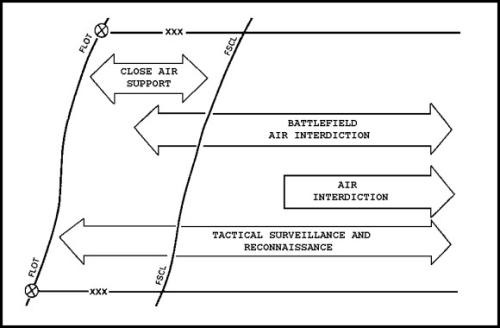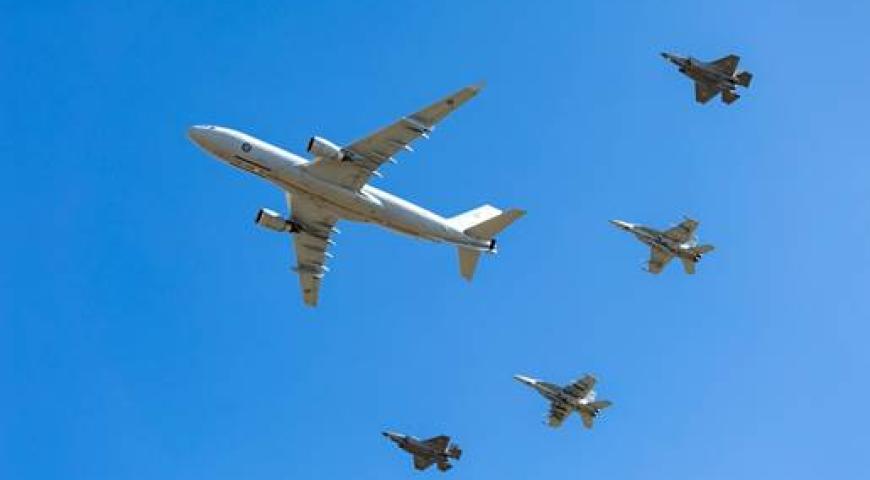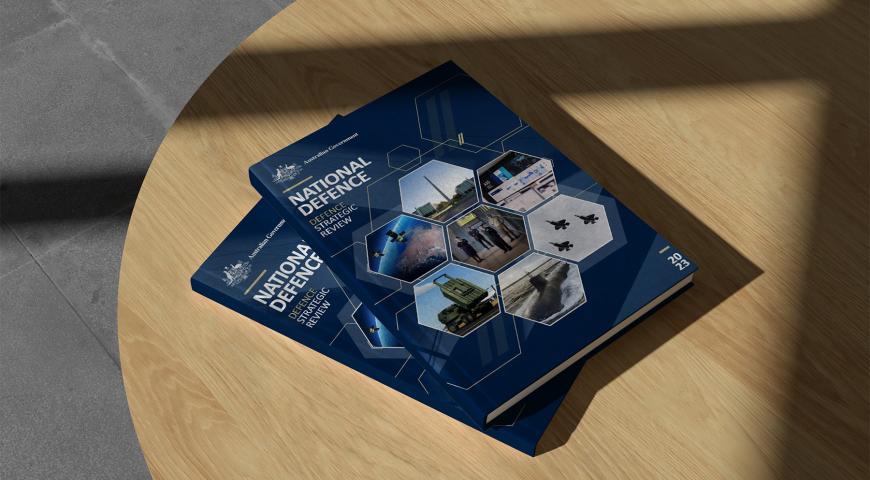Abstract
The objective of the article is to examine the benefits of establishing a dedicated air cell at brigade headquarters to assist the brigade commander and staff successfully conduct integrated Air Land Operations (ALO) during combat. The author initiates the article by highlighting theoretical understanding of Air Land Integration (ALI) (using concepts from vivid military doctrines)[1] and later proposes to introduce a dedicated team of Air Force personnel for integrated ALO to assist the brigade commander and staff. The proposed introduction of a dedicated air cell at brigade headquarters is based on a hypothesis which is derived from systematic analysis of vivid theories proposed by military strategists, combat air operation experts and members of the academia, while giving special emphasis to literature on combat air, amphibious and land-based operations requiring fire support from air assets, casualty evacuation and aerial interdiction. It also retains the viability and practicality of Air Land Integration (ALI) during combat operations. The author then gives a detailed account of the proposed air cell for an integrated ALO at brigade headquarters.
Introduction
As evident from the battles fought in the 21st century, only those combatants will be victorious who attain the mastery to employ air assets efficiently and effectively in combat. This statement highlights the fact that victory is possible if the combatant is able to efficiently harness available resources (aerial and ground assets) and effectively employ them during the battle. So, how should the combatant achieve it? The answer lies in systematic and timely integration of vivid forces (air and ground) during combat.
But to achieve one hundred per cent integration of forces during battle, the principle relies on effective planning which is undertaken with an integrative mindset. Deploying individual forces and expecting integration at a moment’s notice s disastrous and could result in negative exercised outcomes. Now, the question is, what steps should a combatant take to achieve successful integration of combined forces in battle? To answer this question, the author revisits theoretical concepts of integrated ALO in the conventional battlefield.
Understanding Integration of ALO in the conventional battlefield
The theoretical segment of the integration of ALO in the conventional battlefield analysed in this section is based on the concepts detailed in vivid military doctrines and research papers written by military scholars–not limited to combat air and land-based operations involving air assets but including certain joint operational working papers with an emphasis on close air support (CAS) and aerial interdiction (AI).
With reference to the air/land integration, the Air Force operates in coordination with land components undertaking vivid aerial roles. Additionally, during peacetime the air element supports land component in two phases:
1st Phase
The air assets are tasked to police skies exclusively when a no-fly zone is established. The air assets maintain dominant air presence in the skies to check violations from concerned threats.
2nd Phase
The air assets support ground forces with aerial reconnaissance, provide command and control using Airborne Warning and Control Systems, force mobilisation and logistics through tactical air transport, and recovery of injured personnel using designated air assets for casualty/medical evacuation.
To identify solutions for effective integrated ALO, it is imperative for decision makers and military leaders to truly understand the concept of close air support (CAS). CAS is defined as an aerial action undertaken by either a fixed-wing or a rotary-wing aircraft against the adversary’s targets, which are increasingly closing on ground forces and endangering them to an extent of being overrun, requiring specialised units embedded with the ground forces equipped with technical expertise and under the leadership of an integrated command with precise knowledge of every fire and manoeuvre mission in detail, enabling them to support ground forces. The objective of maintaining constant presence of air assets and CAS is to provide extensive fire support to land components in an effort to identify and eliminate threats posed by the adversary whose fire capability or numerical superiority may pose a direct threat to the survival of ground forces. The success of CAS lies in close coordination of Air Force leadership, designated air assets with that of land-based elements and civilian authorities. With effective coordination and cooperation from multiple authorities, all CAS missions will result in positive exercise outcomes.
For effective integration of air/land operations, requests for CAS, especially those with imminent importance, must be analysed and assessed by a G3 (Air Ops). The G3 (Air Ops) should then confirm availability of air assets with G3 (Air Liaison Officer, ALO). It is then the responsibility for the G3 (ALO) to decide whether the adversary marked by land component is significant enough for an aerial incursion, or for ground forces to call attack helicopters from their sister army aviation unit. If the G3 (ALO) find the marked target significant for an aerial incursion, it will seek permission from the Air Officer Commanding (AOC) for assets intervention.
Close air support, too, is carried out under two conditions: scheduled close air support and on-request close air support.
During scheduled CAS, the air assets are distributed in certain areas of the combat zone where they may be required to attack an adversary’s target marked by ground forces with a pre-decided tally-on-target. In this case, the use of CAS is usually discussed and deliberated during briefing/planning of operations and in consultation with the ground force commander. In this case, the intelligence received from ground forces plays an incredibly significant role, as the make and model of the target, area of approach, area of departure and its movement are deliberated on before target acquisition is set, in an effort to identify the best available weapons to neutralise it.
On-request CAS calls for the aircraft to be ready, prepared for any unforeseen emergency and stationed at the ground deck or in an airborne alert posture until CAS becomes imperative, enabling the aircraft to act without losing critical time. On-request CAS is time-sensitive in nature and is called on at an unexpected time, especially in emergencies where aerial assets deployed elsewhere are re-tasked to support the ground forces and replenish their immediate needs.
Besides CAS, aerial assets are frequently employed for aerial interdiction. It means employment of air assets for any action to systematically annihilate, disorganise or obstruct the adversary’s ground forces and their movements, along with other vital installations/assets they may carry to target allied ground troops. It further comprises use of air attacks in an effort to create disarray in the adversary’s forces at the same time as the allies’ ground forces call for casualty evacuation, taking the advantage of replenishing men and materials to directly challenge the remaining adversary’s ground troops.

Besides close air support and air interdiction, ground forces frequently call for aerial recon. Air recon, or tactical air reconnaissance as termed predominantly by ground forces, is employment of fixed-wing or rotary-wing aircraft (RPAs and helicopters) to obtain critical information pertaining to topography, weather, adversaries’ lines of communication, troops position, assets movement and allocation, composition of technical installations, electronic capabilities and radar signature emissions. Additionally, it also provides holistic data on composition of artillery, movement of guns, battlefield monitoring, target acquisition, and limitations of enemy airspace. Tactical air recon provides critical data which must be interpreted in a timely manner, assessed, and analysed to support the battle plans of a brigade commander and open up options of offensive manoeuvrability to the commander and staff. In brigade headquarters, the task to brief the brigade commander should be taken by G3 (Ops) who is briefed beforehand by G3 (Air Ops).
Recovery of personnel in battle falls under the joint purview of military commanders, political decision makers and civil society, whose combined efforts are to ensure the safe release of personnel from volatile and hostile regions when they are missing, captured, or secluded from known territories.
Air assets are deployed for recovery of personnel through search and rescue operations (in assistance with specially trained units), combat rescue, and post medical recovery operations. Rotary-wing aircraft employed during medical evacuation must be tasked to G3 (Air Ops), who then coordinate with G3 (Ops) in consultation with the officer from medical services. The G3 (Ops) will coordinate with ground force commander and put up options to the brigade commander. I believe the flow of communication should be as follows:
- An officer from the medical branch, not less than rank of Major (or, if unavailable, an officer equivalent to rank of Major/Lt Col; failing that, the senior-most NCO) will establish communication with tactical operational command (TOC) for medical evacuation.
- The information at the TOC will be carried to the G2 who will then inform the G3 (Air Ops), who will then make the call for selecting a suitable landing zone (LZ) depending upon the terrain.
- The G3 (Air Ops) will relay the information to the G3 (Ops) and the available officer from the medical service post, which the G3 (Ops) will coordinate with G3 (ALO) to contact any available rotary-winged aircraft in the vicinity or relay the information to AOC to immediately launch a rotary-winged aircraft for medical evacuation, post approval from brigade commander.
Proposed architecture of a dedicated air cell for integrated ALO at brigade headquarters
The air cell will host a team of junior and senior service personnel from the Air Force. They will be tasked to integrate resources of the Air Force (air assets) with that of Army component (G3 Ops) and assist brigade commander and staff during operational planning.
The G3(Air Ops) will be a senior NCO with a task to provide aerial planning to the G3 (Ops), in particular to:
- Requesting air assets and planning air operations within the area of operations of the brigade headquarters.
- The officer will be a member of the Air Force and will be tasked to assist in operational planning at the brigade headquarters.
- The officer will also be in charge of the desk of the Air Component in Tactical Operational Centre at the brigade headquarters.
- The officer will coordinate with tactical air controllers, joint terminal air controllers (JTAC, embedded with the ground forces) and report to his/her superior ie, the Air Liaison Officer.
- The officer will be the principal coordinator with ground operations for any aerial request and coordinate with the G3 (Land Ops) on air support requests.
- The officer will be the principal coordinator for air assets (allocation) and will monitor the flight operations within the brigade’s area of operation (AO) air space.
The G3(Land Ops)will be from the Army and will also be reporting to the G3 (Ops). The G3 (Land Ops) will be a senior NCO whose responsibilities will be to:
- Assist the G3 (Ops) in operational planning.
- Observe movement of ground forces and establish constant communication with that of the brigade commander and staff.
- Coordinate the implementation of plan with the ground force commander and that of the air assets in synchronisation with the G3 (Air Ops).
- If necessary, provide tactical options to brigade commander and staff.
- Coordinate with G3 (Air Ops) for correct target acquisition marked by the ground forces.
- Coordinate with ground forces and with the G3 (Air Ops) on position of the air assets and relay their tasking orders to the ground forces.
The Air Liaison Officer will be a senior commissioned officer of the Air Force responsible to the brigade commander and will:
- Provide recommendations to brigade commander and staff on air operations.
- Coordinate with the AOC pertaining to requests for air assets deployment or air support sought by ground forces.
- Liaise between brigade commander and the AOC for management of the air assets in the brigade headquarters’ area of operations (AO) air space.
Conclusion
The integration of Air Land Operations in the conventional battlefield is considered to be one of the most complex challenges pertaining to joint air/land operations and equally holds much vitality during operational planning and tactical action for a brigade commander. The author, through his extensive study of joint operational planning and vivid researches on air combat operations and joint tactical operational architectures written by experts in vivid domain, tries his best to create a hypothesis by superimposing concepts of joint force mobilisation and available literature on integrated Air Land Operations with that of pre-structured organisations, such as brigade headquarters, while creating enough room for a dedicated team to integrate with vast resources available under the purview of a brigade commander and equally leave room for future military theorists to continue their research on the less articulated domain of Air Land Integration (ALI).
[1]The author analyses NATO’s land-based and air operations along with that of the US and British Armies.
Please let us know if you have discovered an issue with the content on this page.
Comments
Start the conversation by sharing your thoughts! Please login to comment. If you don't yet have an account registration is quick and easy.




